Gilan Rural Heritage Museum: The Only Eco Museum in Iran
Gilan Rural Heritage Museum preserves the traditions of northern Iran through its reconstructed village houses, showcasing the region’s rich cultural and architectural legacy.
When you think of a museum, an old building often comes to mind—one where visitors quietly observe faded artifacts under dim lighting. However, the Gilan Rural Heritage Museum, located amidst the lush green forests of Gilan, is a refreshing departure from this typical image.
Instead of dark hallways and paintings, this eco-museum showcases the traditional houses and rural life of Gilan’s villages, offering visitors a vibrant glimpse into the region’s cultural heritage.
Unlike conventional museums where replicas are displayed, the Gilan Rural Heritage Museum has carefully relocated and reconstructed 28 original rural homes from various parts of Gilan, preserving their authentic design, materials, and history.
This museum not only highlights the region's architecture but also immerses visitors in the local lifestyle, from farming practices to handicrafts and local cuisine.
In this blog, you’ll find everything you need to know about the Gilan Rural Heritage Museum, including its history, key exhibits, and the best ways to experience this cultural treasure.
Visit this museum along with your other desired attractions, by tailoring your own itinerary on our Iran Tailor-Made Tours.
History of Gilan Rural Heritage Museum
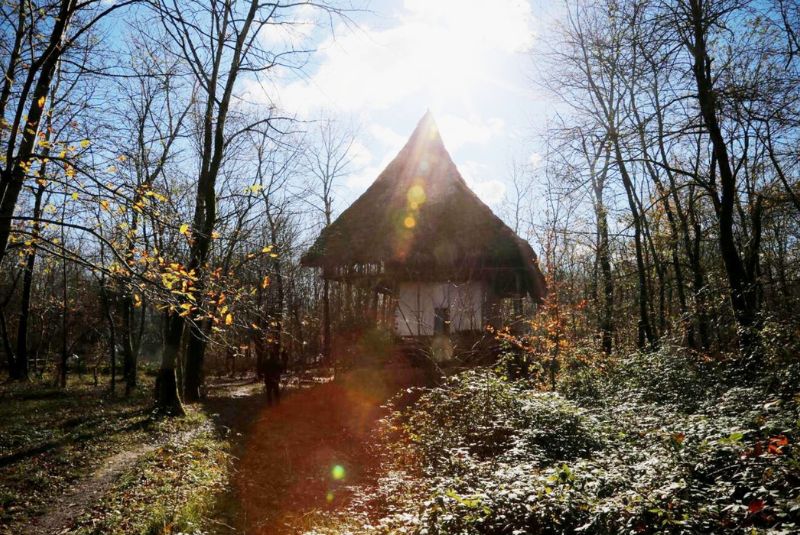
The idea for Iran's first eco-museum emerged after the devastating 1990 earthquake in Rudbar, which destroyed thousands of old houses and buildings, leaving piles of rubble. This tragic event motivated Dr. Mahmoud Taleghani, a professor at the University of Tehran, to take action.
Dr. Taleghani embarked on a unique project to preserve and showcase the rich culture, architecture, and historical heritage of Gilan for future generations. With his deep knowledge in the field and a postmodern approach, he created a dynamic and distinctive museum that displays Gilan's architectural elements, introducing younger generations to the land's distant past.
The research phase for the Gilan Rural Heritage Museum began in 2002, with the support of Gilan's Cultural Heritage, Handicrafts, and Tourism Department, as well as contributions from the University of Tehran, the Alsace Eco-museum in France, and UNESCO. The research team determined that the forests of Saravan, with their similar topography, accessibility, and ample space, were ideal for the project.
In 2005, Dr. Taleghani and engineer Pouya Miryousefi opened the first workshop of the museum, and the first phase was inaugurated on May 15, 2006. Since then, the museum has continued to develop and expand.
| Related: Top 23 Museums in Iran + Photos
Architecture of Gilan Rural Heritage Museum
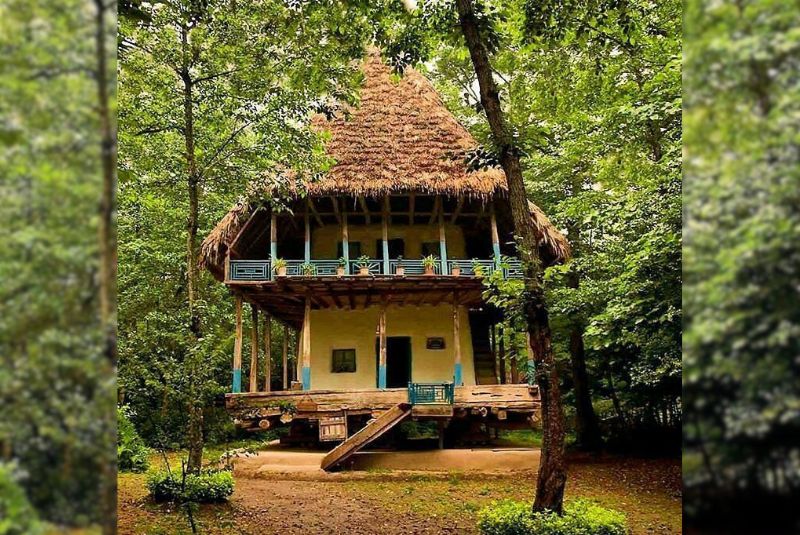
The architecture of the Gilan Rural Heritage Museum is unlike any other museum you've visited. Instead of entering an old building with towering columns and intricate decorations, you step into the heart of the lush Saravan forest, where you walk among houses that are over 150 years old. These 28 houses, originally owned by the Gilan people, have been collected from various parts of the province.
The museum’s architecture embodies a rustic and authentic rural atmosphere, showcasing the culture and traditional architecture of the Gilani people. The buildings include rice storage rooms (kandoj), stables, silkworm breeding areas (telmbar), hay barns, and traditional bread ovens, all preserved in their original form.
The materials used in these houses are natural, such as wood, straw, and corrugated iron, and the spaces reflect the traditional lifestyle, including rice barns, tea-drying areas, stables, and vegetable gardens. This architecture is a true reflection of the Gilan rural heritage.
Different Areas of Gilan Rural Heritage Museum
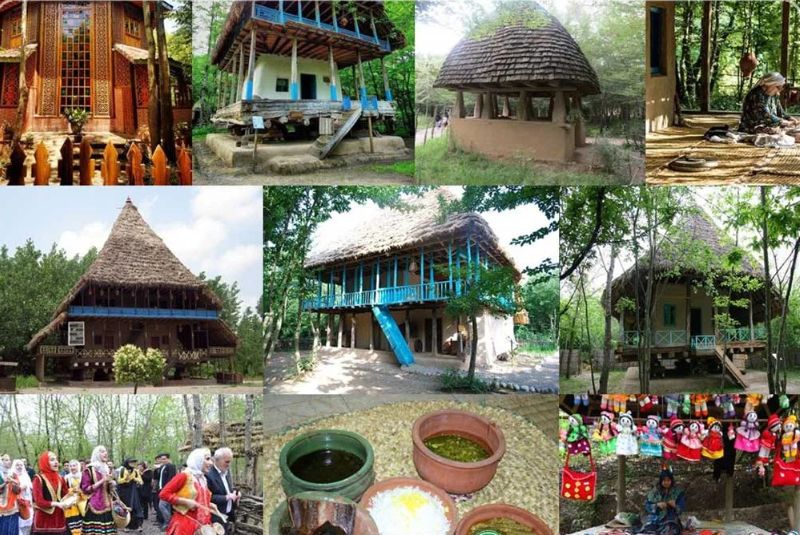
Gilan Rural Heritage Museum represents the cultural diversity of Gilan through nine distinct geographical regions, each showcasing the unique architecture and lifestyle of the people from those areas. These divisions are based on environmental factors, local architecture, livelihood activities, climate, and culture, rather than political boundaries.
The museum is divided into two main branches: the eastern and western regions of Gilan. Each region includes areas such as the plains, foothills, mountains, and coastal zones, showcasing the diversity of Gilan’s rural life and architecture.
Eastern Plains
The Eastern Plains region includes the areas east of the Sepidroud River, covering residential complexes like Kachalam, Permar, Chencho, Montazeri, Mirsyar, and Rafiee. Visitors can explore traditional features like a mosque, teahouse, traditional charcoal kiln, spaces for traditional performances, handicraft market, and bakeries.
The unique wooden structure of houses, built on "Shakili" (wooden foundations) without nails, is a notable feature, as well as the steep, sloping roofs that prevent rain from entering the buildings. The main livelihood of this area is rice farming and a small amount of silkworm cultivation.
Western Plains
The Western Plains, extending from Shaft to Astara, is home to six residential complexes, including Motasham Taleb, Mousavi, Mousa Zadeh, Haghighi, Hasani, and Mahmoudi. These villages feature a clever architectural design that adapts to the humid climate of Gilan.
The houses here use a two-layer design, with an outer transparent shell and a protective inner shell to prevent humidity infiltration. The region’s economy primarily revolves around rice farming, livestock farming, tea cultivation, and a limited amount of silkworm farming.
Central Plains
The Central Plains, covering areas in the western parts of the Sepidroud River near Rasht and parts of Shaft, include five distinctive houses from the Bialva, Danesh, Amini, Moradi, and Sadeghi families.
Along with these houses, visitors will find a traditional teahouse, a blacksmith workshop, and a rice farm. The region’s livelihood revolves around rice cultivation, silkworm farming, and plum tree planting.
Eastern Mountain
The Eastern Mountain region covers the mountainous areas and highlands to the east of the Sepidroud River. The houses in this area, belonging to the Mohammadnejad and Mohseni families, are designed to withstand the cold climate, with smaller spaces compared to the plains and foothills.
The houses are often made of stone walls, and the roofs are covered with wooden panels. Livelihood activities in this region are mostly related to livestock farming, with seasonal use of highland houses.
Eastern Foothills
The Eastern Foothills region, situated along the eastern side of the Sepidroud River, showcases houses from families such as Rostami, Jamei, and Behzadi. These homes are designed with an emphasis on maximizing sunlight and airflow.
The houses in this area typically feature a two-story structure with stone or clay walls and roofs covered with wooden panels. The economy of the foothill residents focuses on livestock farming, beekeeping, poultry farming, gardening, and tea cultivation.
Western Mountain
The Western Mountain region, which includes highland areas west of the Sepidroud River, features a single house from the Hajetpour family. This house was built in the 1340s using local materials with help from the local community. The economy in the Western Mountain area focuses mainly on livestock farming.
Western Foothills
In the Western Foothills, you will find houses from the Rahmani, Tarabi, and Lotfi families. These homes, like those in the Eastern Foothills, are built with a wooden skeleton, stone foundations, and steep roofs. Residents of the Western Foothills engaged in farming, rice cultivation, hunting, and a small amount of silkworm farming.
Eastern Coast
On the Eastern Coast, there is only one residential complex, the Mousavi family house, which was relocated from the center of Roudsar. The materials used in the construction of this house include stone foundations, wooden walls, a wooden ceiling, and a galy roof. The coastal inhabitants mainly engage in fishing, agriculture, and livestock farming.
Western Coast
The Western Coast section of the museum is home to the Asafi family’s house, originally from Talesh. Built in 1966 with local materials and labor, the house reflects the agricultural lifestyle of the region. The people of the Western Coast primarily relied on farming for their livelihoods.
Things to Do at Gilan Rural Heritage Museum
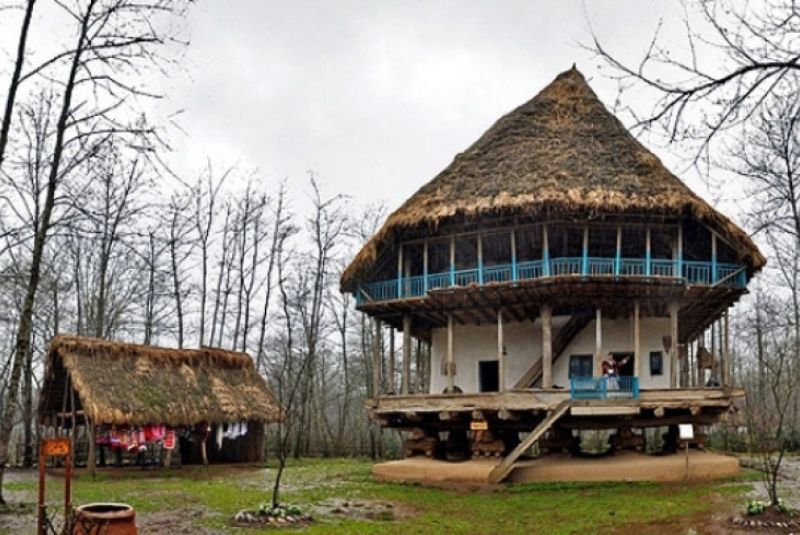
In addition to exploring the attractions and artifacts of the Gilan Rural Heritage Museum, visitors can also enjoy a variety of recreational activities in the surrounding area. Some of these activities include:
1. Nature Walks
One of the most obvious and relaxing activities is a nature walk. The museum is nestled in the heart of the towering forests of Saravan, where the landscape remains vibrant and green throughout the year. Visitors can enjoy the peaceful atmosphere, with the only sounds being the chirping of birds and the refreshing air that soothes the mind and spirit.
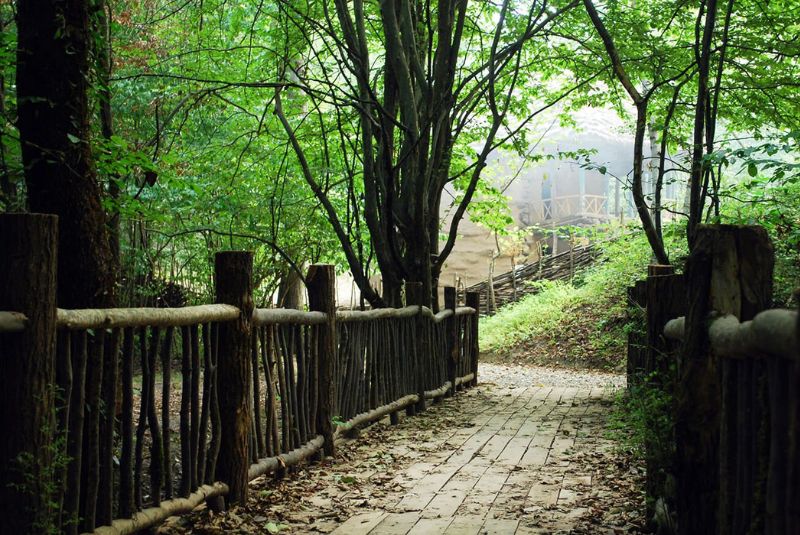
2. Traditional Clothing Photography
A great way to preserve memories of the visit is by taking photos in traditional clothing. The museum provides a photography studio where visitors can dress in local attire and capture beautiful photos amidst the museum's rural setting.
3. Gastronomy
No visit to Gilan is complete without indulging in the region's delicious cuisine. After a stroll through the museum, visitors can enjoy local delicacies such as Mirza Ghasemi and Baghala Ghatogh while sitting at wooden tables surrounded by lush greenery. In addition, local women often bake traditional breads, which can be purchased and enjoyed.
| Read more: Persian Food
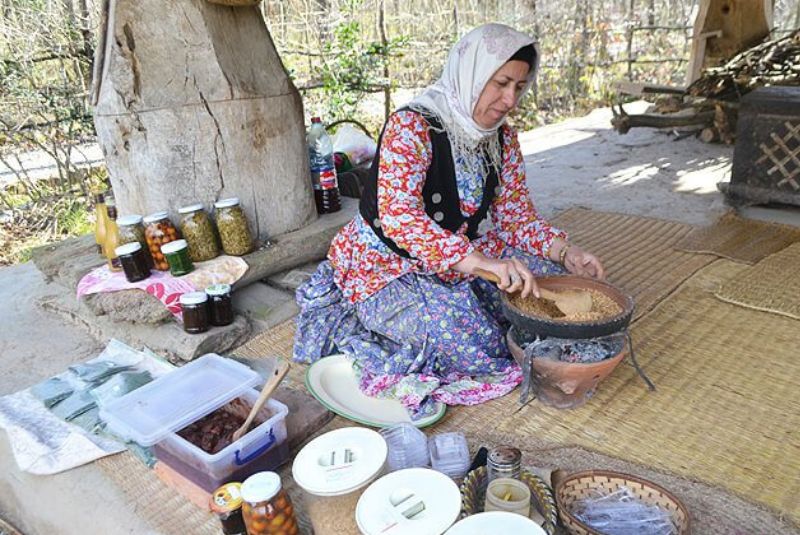
4. Visiting the Handicrafts Bazaar
After enjoying the local dishes, visitors can explore the museum's handicraft market. This vibrant market features a wide array of colorful and unique items, including handmade dolls, jewelry, traditional cooking vessels, and local foods. It's an excellent place to buy souvenirs and gifts from the region.
5. Museum of Famous Figures
A fascinating part of the museum is the Museum of Famous Figures of Gilan, located in a wooden, intricately carved building. Here, statues of prominent figures like Dr. Mohammad Moein, Professor Fazlollah Reza, and others are displayed.
The building itself, inspired by traditional architecture, is adorned with beautiful details like wooden columns and geometric patterns, offering a cultural and historical experience.
Exhibitions and Performances at the Gilan Rural Heritage Museum
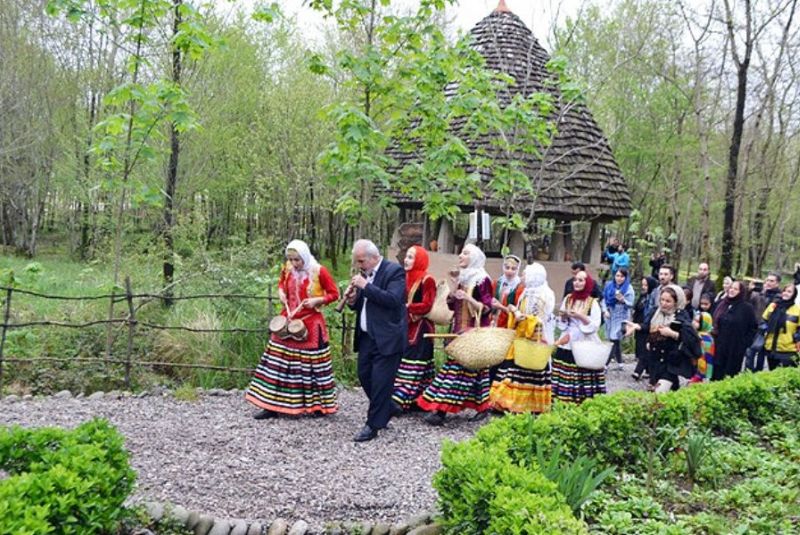
The Gilan Rural Heritage Museum is not just a place for showcasing traditional homes; it aims to preserve and promote the customs, traditions, and cultural practices of Gilan for future generations. A key aspect of any culture is its traditional performances, and the museum offers a variety of captivating Gilanian performances for visitors to enjoy.
Arooseh Goleh (The Doll Bride)
This fascinating performance is part of the Gilanian New Year's celebrations, featuring three main characters: the Giant, Pir Baba (an old man), and Naz Khanoom (a beautiful woman). The play, performed from mid-February to Nowruz (the Persian New Year), portrays a rivalry between Pir Baba and the Giant over Naz Khanoom.
The Giant, who symbolizes winter and darkness, has a terrifying face smeared with charcoal, while Pir Baba represents kindness and gardening. The play is a lively street theater performance, with actors traveling from house to house after sunset, and the hosts offering rice, eggs, and money as thanks. Although rare today, visitors can still experience this performance at the museum.
Gilemardi Wrestling
Another exciting attraction at the museum is Gilemardi Wrestling, a traditional form of wrestling that dates back to the 4th century AH. This event is a spectacle of strength and skill, reminiscent of gladiatorial combat but without dangerous weapons or excessive bloodshed.
Wrestlers perform specific rituals before entering the ring, including showing their physical readiness and respect for Imam Reza (the eighth Imam of Shia Islam). During the match, traditional Gilanian music and songs play, energizing both the wrestlers and the audience.
Lafandbazi (Rope Walking)
For those seeking excitement, Lafandbazi is a thrilling traditional performance. In this display, a tightrope walker demonstrates impressive acrobatic moves while a character called Yalanchi (the trickster) creates tension by interacting with the performer. The performance is accompanied by live music, enhancing the overall excitement of the show.
Best Time to Visit the Gilan Rural Heritage Museum
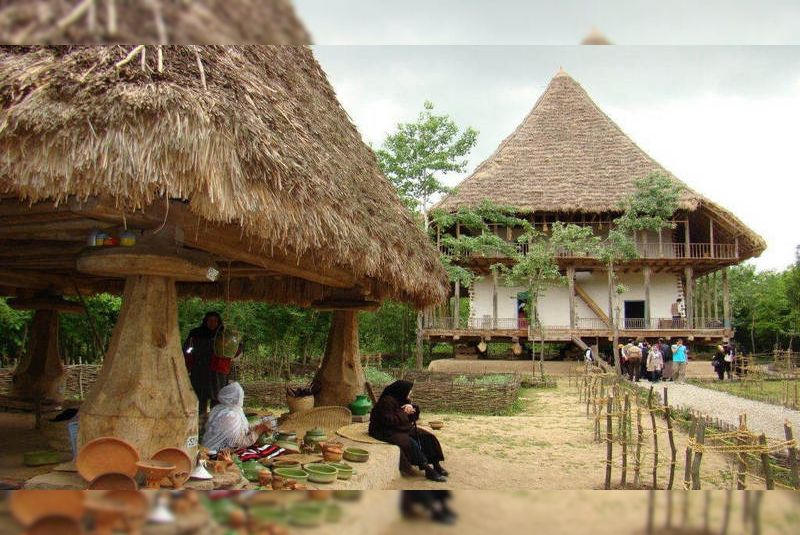
The Gilan Rural Heritage Museum is nestled in the heart of the Saravan forests, offering stunning natural surroundings year-round. However, the best times to visit are early spring and autumn when the weather is mild. During these seasons, you can comfortably explore the museum for long hours without the discomfort of extreme heat or cold.
Visiting in late spring or summer may be challenging due to the high temperatures and humidity, which could affect your experience. Similarly, winter brings cold weather that might make it less enjoyable to wander around the museum. So, plan your visit in the cooler seasons for the most pleasant experience.
Opening Hours
The Gilan Rural Heritage Museum is open for group visits with a tour guide from Saturday to Wednesday. However, on Thursdays and Fridays, visitors can explore the museum individually. The museum is open daily from 9:00 AM to 5:00 PM, allowing plenty of time to experience its fascinating exhibits.
Gilan Rural Heritage Museum Location and Access
The Gilan Rural Heritage Museum is located in the Saravan Forest Park, situated 18 kilometers from the Rāshteh-Qazvin Freeway, just before the police checkpoint. It can be found at kilometer 3 on the Saravan-Shaft Road (Saravan-Fuman).
How to Get There
The best way to reach the Gilan Rural Heritage Museum is by car, as public transportation options are limited. If you're driving from Tehran, head toward Karaj and take the Qazvin-Karaj Freeway. From there, continue on the Qazvin-Rāshteh Freeway.
After about two hours of driving, pass the Imamzadeh Hashem toll booth and continue straight until you reach the exit for the Saravan-Fuman Road (Saravan-Shaft). Follow the road signs to the museum entrance.
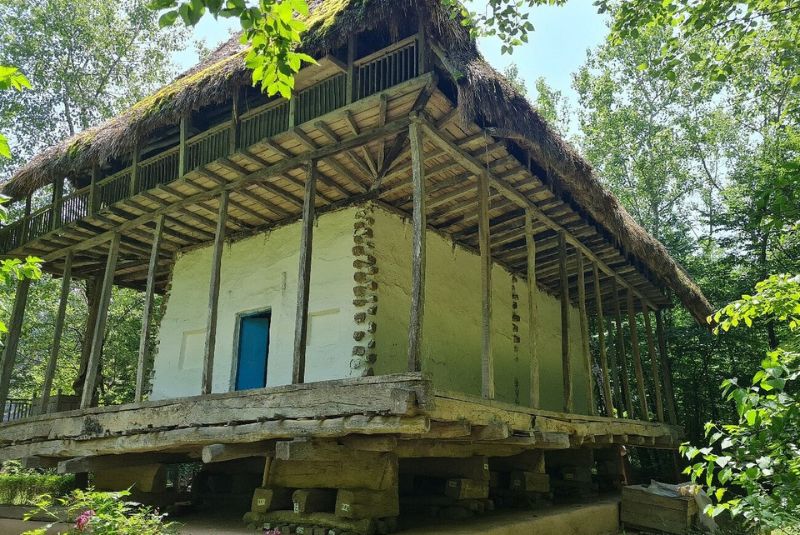
Tourist Attractions Nearby
If you've visited the Gilan Rural Heritage Museum and explored its exhibits, you might also want to check out the nearby attractions that offer stunning natural beauty and cultural experiences.
1. Saqalaksar Lake
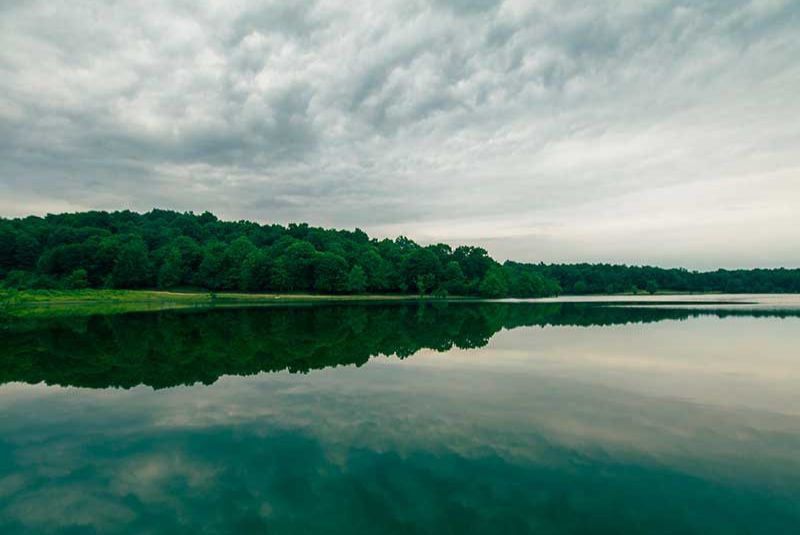
Just 17 kilometers (27 minutes) from the museum, this picturesque lake is a must-see. It was created by a resourceful farmer in 1983 to combat water scarcity in his village. Surrounded by lush nature, Saqalaksar Lake is perfect for walking, picnicking, photography, and boating, offering a serene escape.
2. Saravan Forest Park
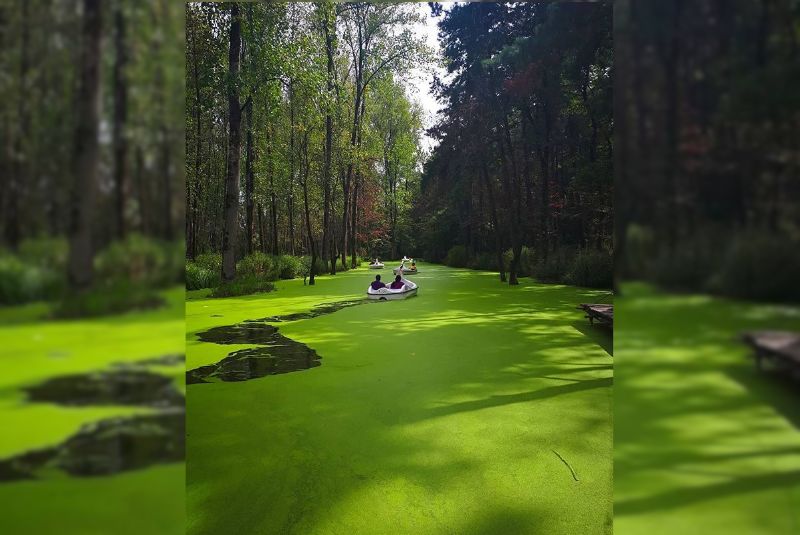
Located only 4 kilometers (6 minutes) from the museum, this tranquil forest park offers a peaceful retreat with towering trees, birdsong, and fresh air. It's an ideal spot for nature lovers, with amenities like picnic areas, a supermarket, and even paintball for some extra fun.
3. Saravan Village
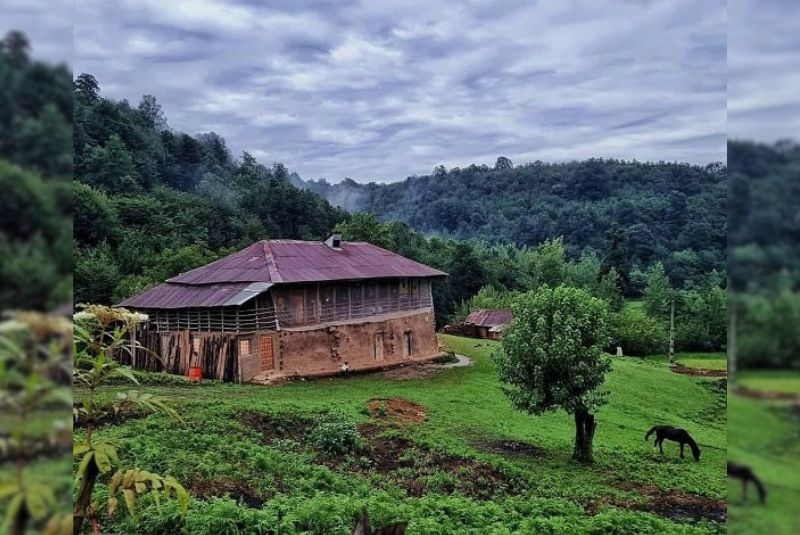
For a more authentic rural experience, visit the nearby Saravan Village, just 11 kilometers (18 minutes) from the museum. This charming village is quieter than the popular tourist spots, allowing visitors to experience the simplicity and beauty of rural life in Gilan.
4. Saravan Wetland
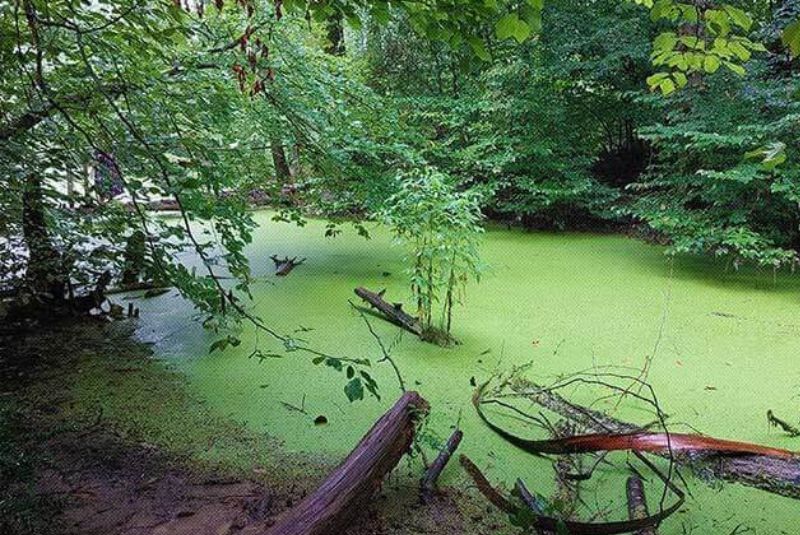
A short 4-kilometer (6-minute) drive from the museum, the Saravan Wetland is a stunning and peaceful area, perfect for boating and exploring the unique ecosystem. It’s a perfect spot to relax and immerse yourself in nature's beauty.
Accommodation at Gilan Rural Heritage Museum
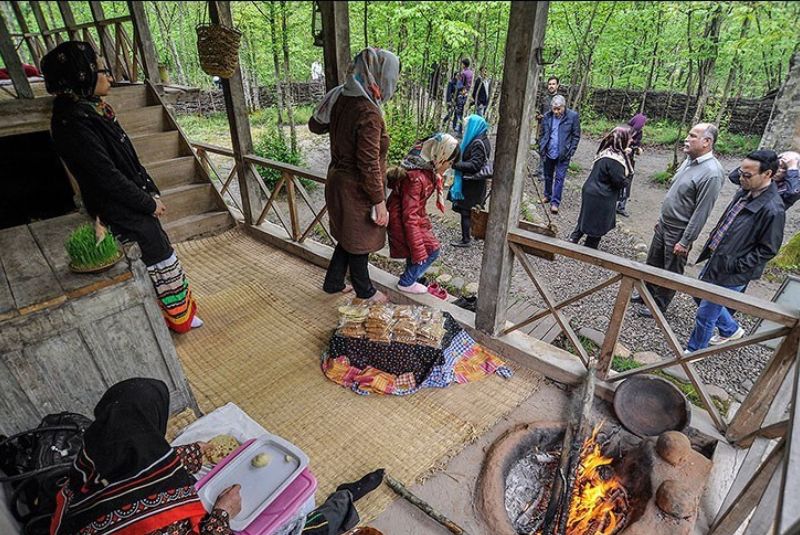
When it comes to accommodations near the Gilan Rural Heritage Museum, you have plenty of options to choose from. For those who prefer luxurious hotels and clean rooms, there are several hotels in Rasht that can host you. However, if you are an adventure enthusiast and enjoy being closer to nature, camping might be the ideal choice.
For those who are not keen on formal city hotels but are not ready for an overnight stay in the forest either, there are many eco-lodges and guesthouses near the museum that offer short stays.
Hotels near Gilan Rural Heritage Museum:
- Kadus Hotel, Rasht
- Shabestan Hotel, Rasht
- Pamchal Hotel, Rasht
- Sabouri Hotel, Rasht
- Pardis Hotel, Rasht
Eco-lodges near Gilan Rural Heritage Museum:
- Toranj Motel
- Mi Jan Eco-lodge
- Paizian Eco-lodge
- Pir Ali Katam Eco-lodge
- Bam Golsarck Eco-lodge
Camping and Overnight Spots:
- Haji Bakendeh area
- Saravan Forest
- Darnika Forest Park
- Saqalaksar Village
- Saravan Village
Bottom Line
The Gilan Rural Heritage Museum offers a unique and immersive experience, far from the typical museum setup. Nestled in the lush Saravan forests, this eco-museum brings Gilan's rural life to life through 28 original, relocated homes, showcasing traditional architecture and local crafts.
Visitors can explore diverse regions of Gilan, each reflecting the area’s unique cultural practices, from rice farming to silkworm breeding. Beyond the exhibits, the museum offers activities like nature walks, traditional clothing photography, and enjoying local cuisine. The surrounding area also offers charming attractions such as Saqalaksar Lake and Saravan Wetland.
Share your story!
Comment below and let us know about your Experience.
Your story inspires others!


Comment
Leave a Comment